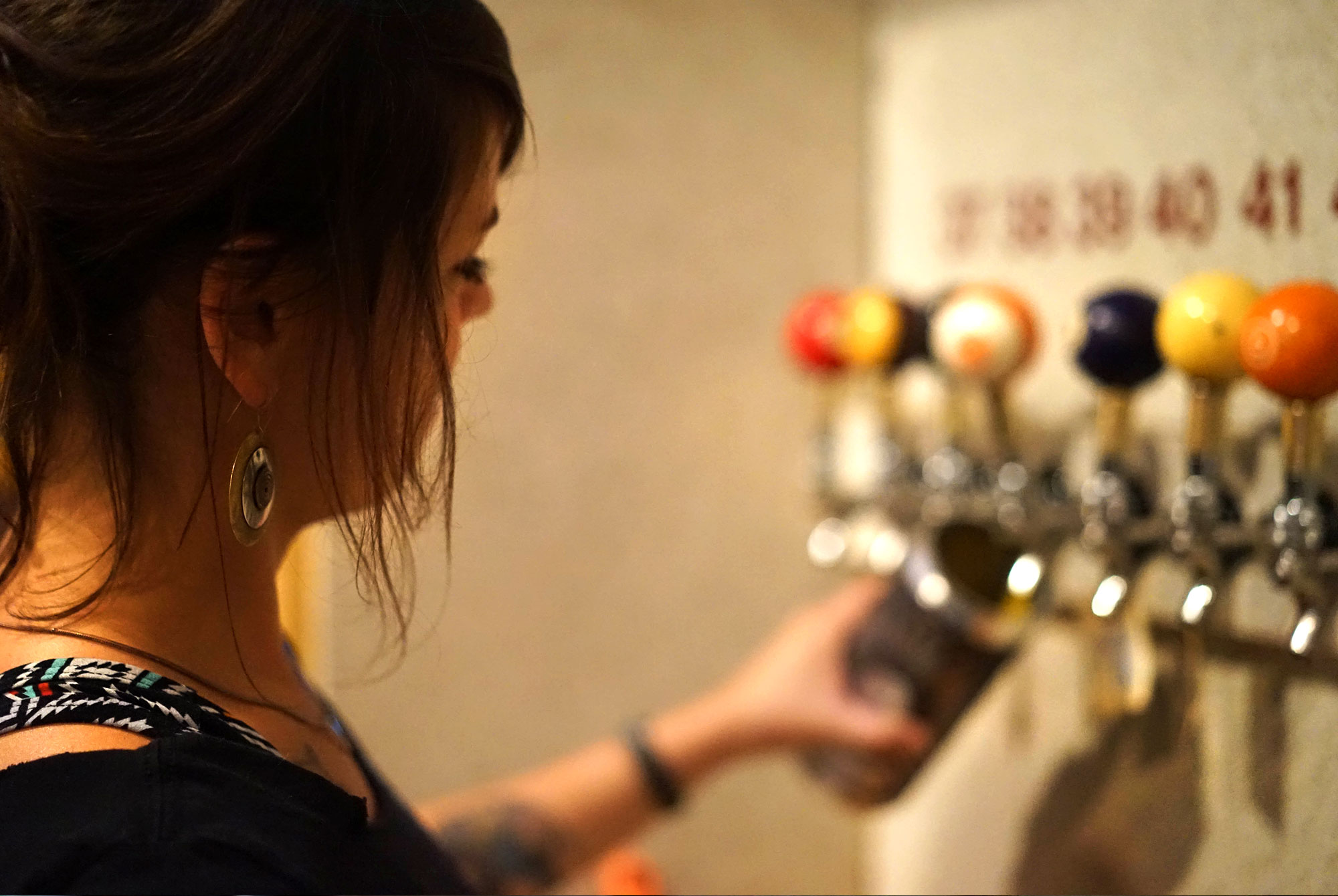Shop
I’m a Female Beer Server and Men Won’t Trust Me
Female beer server Christie Dix explores the gender bias in craft.
I bartend at a place with an abundance of craft beers. We always have a rare sour available, and my favorite, North Coast’s Old Rasputin stout, flows steadily from the nitro tap. People flock from all over to share their beer love with others, so I have to know my stuff.
Recently, a man sat down at the bar, and I asked him what he liked to drink, hoping to hit the taste profile on the head, as usual. Instead of answering, the man insisted I give him the favorite IPA of the guy next to me. The guy to whom he referred was our sweet, innocent barback who’d just turned 21, and puckers his lips at the bitterness of a pale ale. There must be some mistake, I thought. Why wouldn’t he just ask me? I poured the man my own favorite instead, which he loved.
He wasn’t the first man to bypass my opinion. I once had a painstaking conversation with a man about beer characteristics for five minutes, just to have him dismiss me, stating, “That was a nice chat, honey. Now send Tom over. I want to actually order a beer.”
To me, linking beer preference to gender is a confusing social phenomenon. I understand, however, that in the past many beer commercials reinforced gender barriers by preying on men’s insecurities, trying to convince men that drinking beer is an easy and inexpensive way to assert their manliness. In these same commercials, women are portrayed as sexual objects. When a female character is smitten with beer culture in the ad, the male character often responds with awe and wonder. I see this mirrored in my own life, when men think I’m somehow sexier because I drink beer. These men are surprised that I know what I know, and that’s why it’s “attractive” when I school them in hop profiles or beer history.
But sexism only hurts the beer community. Ginger Johnson, founder of her marketing company Women Enjoying Beer, explains that “we need to focus on the brains and the tastebuds.” Marketers would do well to focus on selling beer to peoples’ craving for flavor instead of their gender. In fact, in her book How to Market Beer to Women and in her TED talk, she shows that there’s no good reason why sexism exists in the beer industry. “Frankly,” she says, “who on Earth got the idea that beer was for one gender and not the other?”
In a world where many beer names include allusions to panties, I understand some women’s feelings of exclusion from the beer community at large. Women are also held to a lot of unrealistic standards by society, and beer is not usually associated with a tiny waist. Women will say to me, “I just don’t drink beer,” and will laugh in a knowing way, waiting for my look of approval and agreement. I see this as a challenge. I love finding a woman’s first favorite beer, which is oftentimes the most robust or sour one we have. In my experience, when women go for something fruity instead of trying one of the other hundred flavors we have on tap, it’s usually out of a media-induced conformity to stereotypes.
Some of the best beer in the world is fruited, but there are better first steps into the craft beer world — clean pale ale or pilsner come to mind. I hope that once more women are aware of the diversity of flavor available in beers, they’ll denounce sexist marketing and become the demand that spurs not only more inclusive beer marketing, but better beer. To achieve this, you have to speak up. “If you want to be treated equitably and with full respect, it’s on everyone to take a piece of that responsibility,” Ginger Johnson declares. It’s not doing anyone favors when we feed into sexist ideas, leading to products that don’t reflect the full potential of the craft beer drinking public.
For many years, beer has been framed as masculine, but it’s a much more democratic drink. I’ve seen that fact with my own eyes, behind the bar, and at the world’s best breweries. There are a lot of talented women pushing beer forward; as Ginger says, “the ones who are doing it the best are the ones who are quietly going about their work, making sure they’re putting forth an excellent product and making sure they’re reaching people who want their product.”
As a bartender who loves my job, I can show you the world of craft beer. You just have to trust me.





